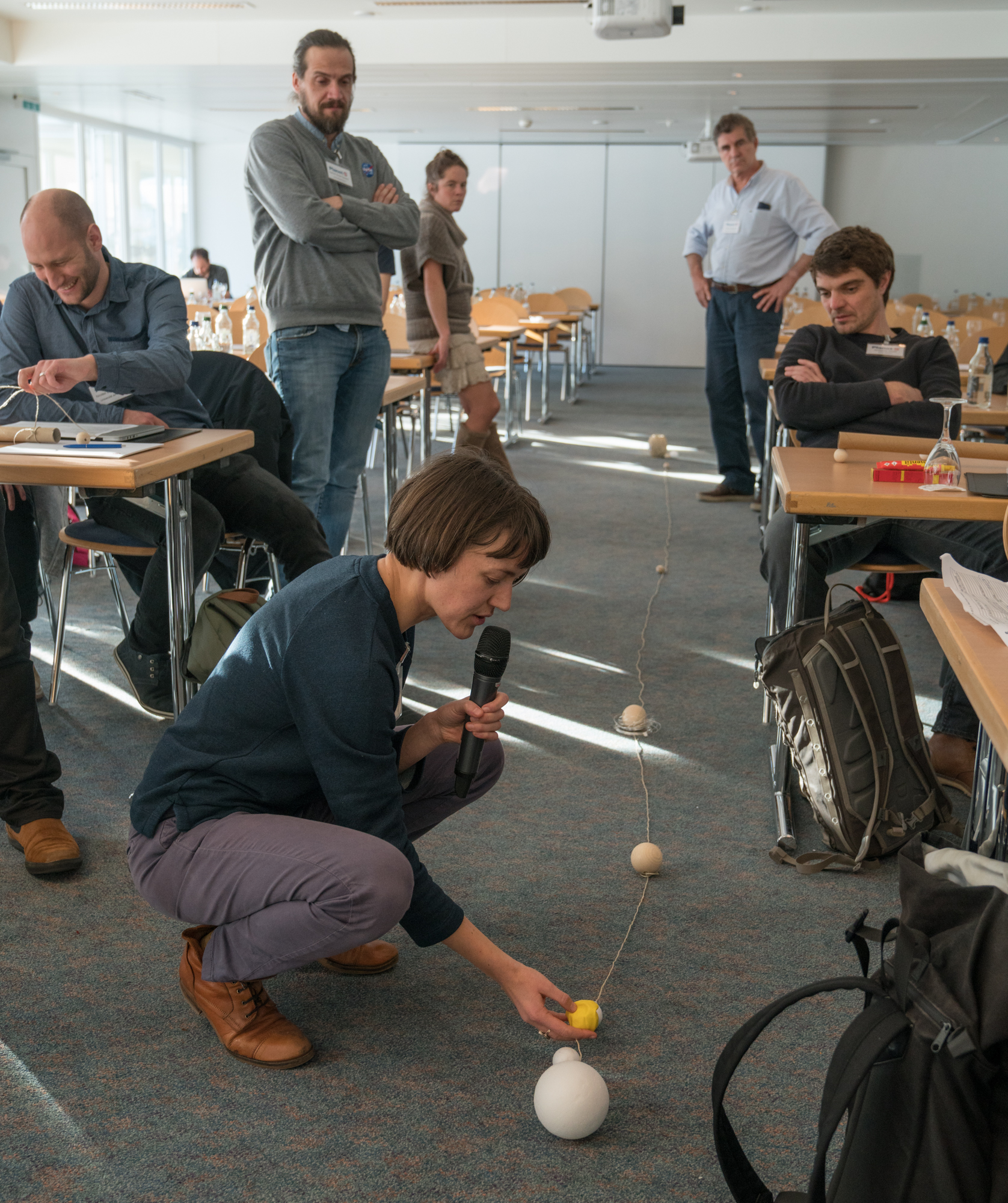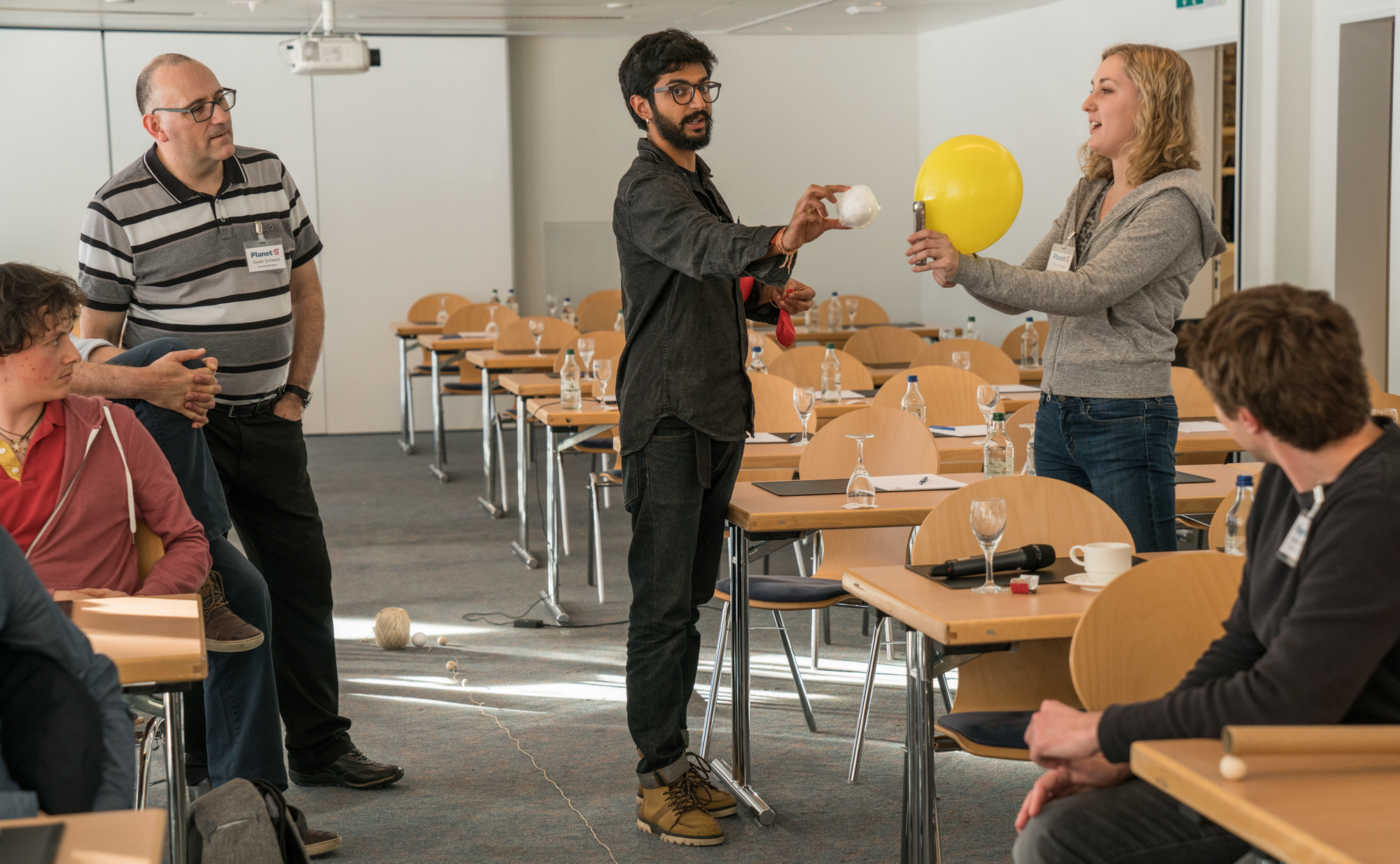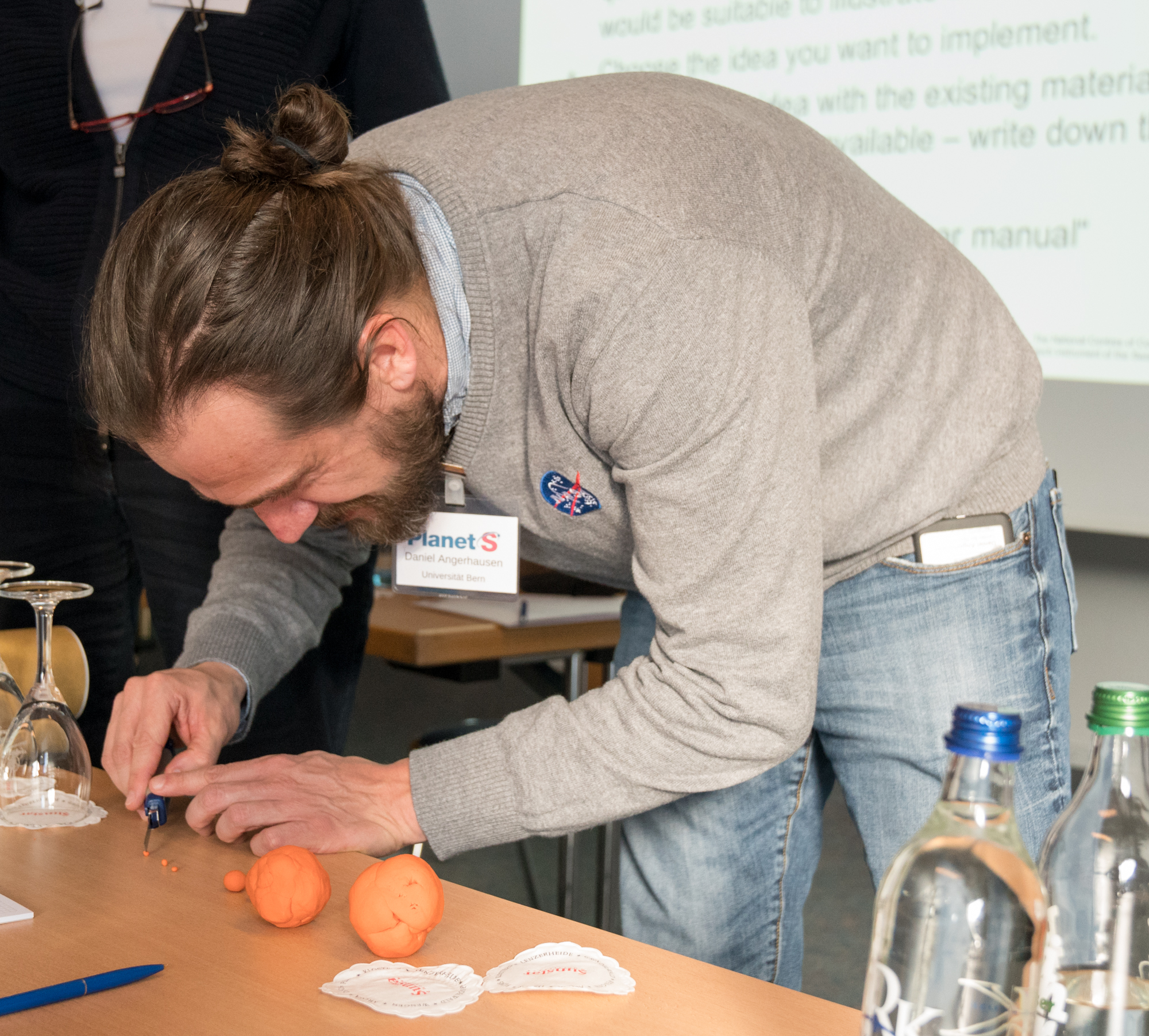Do-it-yourself in Grindelwald

When we visit schools or when schools visit us, we regularly use models or didactic tools to explain astronomical mechanisms. One of the best known is the one that explains the motion of a planet around a star and the motion of the star around the planet, a tool that allows illustrating the radial velocities method. It turns out that we lack many tools to answer the multitude of questions asked by children. For example, it is easier to explain the deformation of the space with a deformable table than with words.
We therefore had the idea for this general assembly to propose a workshop of do-it-yourself to highlight ideas that could allow us to design tools explaining some of astronomical phenomena. During each of the three workshop sessions, groups of one or more PlanetS members worked on the design of a didactic tool that was easy to build and understand.
As a result, three groups engaged in the workshop with very different attitudes. Indeed, one group was particularly involved in the exercise and found it rather entertaining, another group played the game while admiting that the manual work was not its strong point, while the third group did not really care about the proposed approach.
However, the exercise did lead to some interesting proposals, as shown in the photographs taken during the workshops.
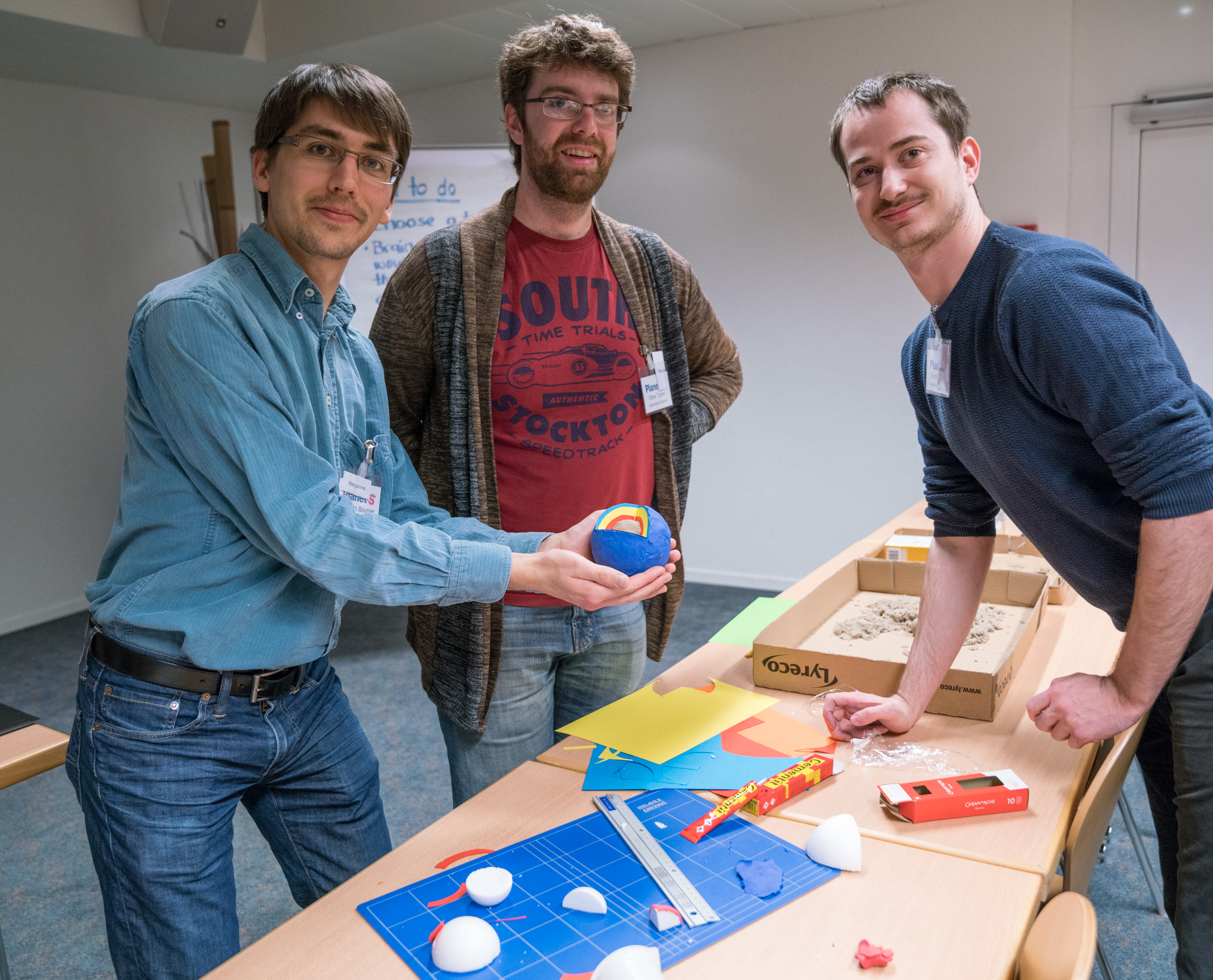
Vincent Bourrier and his colleagues explain that when we look at a planet at different wavelengths, we see different layers of the atmosphere. (Photos Sylviane Blum)
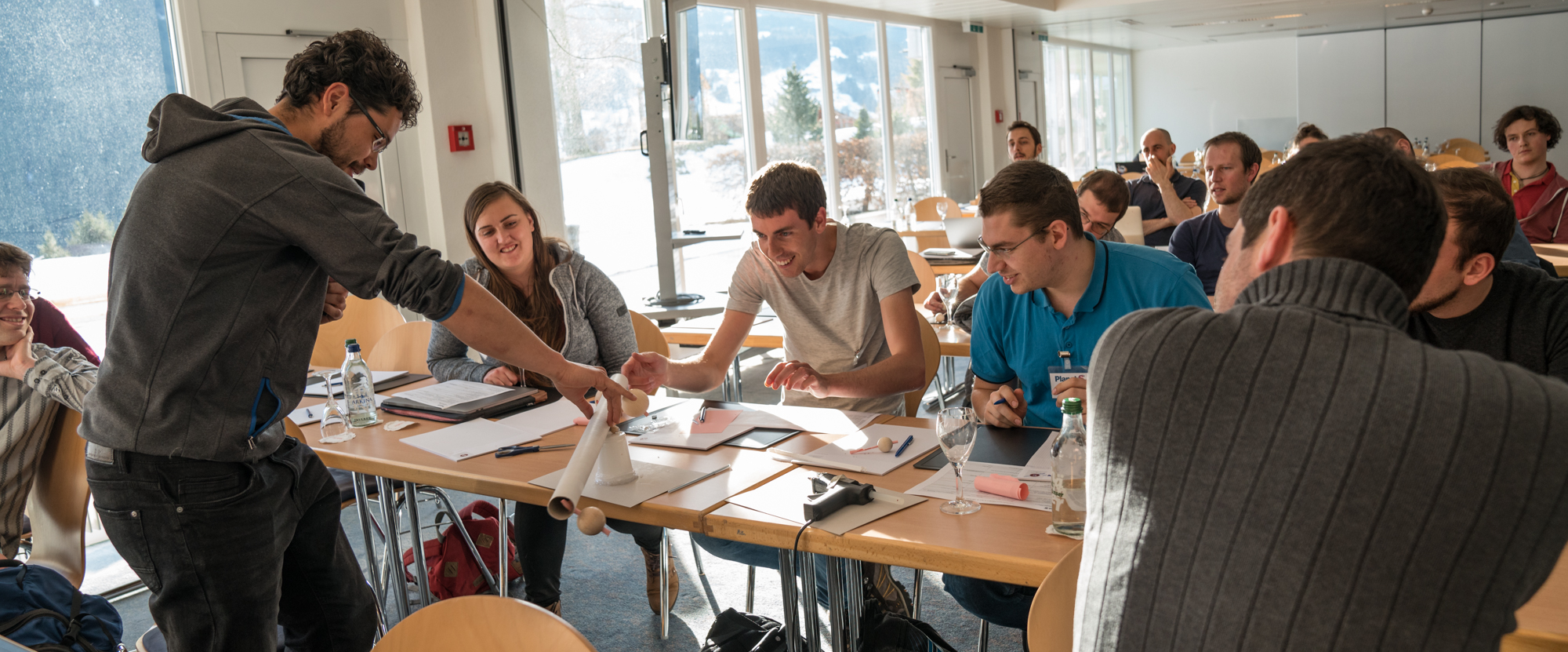
With two spheres (a star and its planet) rotating around their centre of mass, Aurélien Wyttenbach explains the principle of the radial velocities method.
More in detail: How to build planets according to Daniel
Take at least one kilo of modelling dough (or make it yourself with flour, water, salt and bicarbonate of soda.
Shape a roll and divide it into 10 equal parts. Of those 10 parts:
- 6 for Jupiter
- 3 for Saturne
Divide the remaining one into 8 equal parts. Of those 8 parts:
- 3 for Saturne
- 2 for Uranus
- 2 for Neptune
Divide the remaining one into 8 equal parts. Of those 8 parts:
- 4 for Saturne
- 2 for Uranus
- 1 for Jupiter
Divide the remaining one into 10 equal parts. Of those 10 parts:
- 3 for Earth
- 2 for Venus
- 4 for Neptune
Divide the remaining one into 5 equal parts. Of those 5 parts:
- 2 for Venus
- 2 for Mars
- 1 for Mercury
You got a beautiful solar system. Now if you want to make the Sun according to the same principle, you would need about 900 kg of modelling clay !!
Categories: Internal Newsletter
